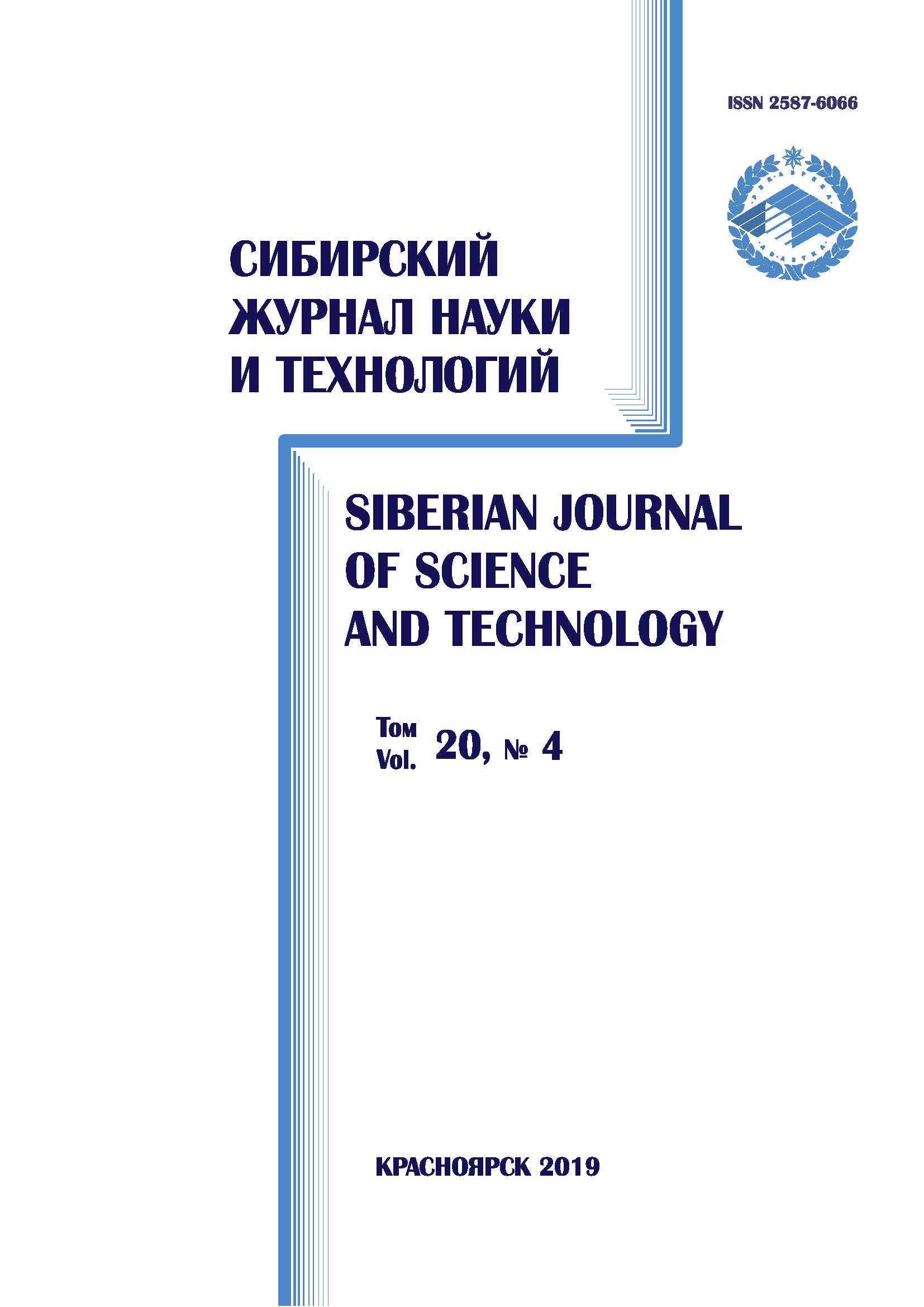Comparison of methods for initializing starting points on the optimization genetic algorithm
- Authors: Pavlenko A.A.1
-
Affiliations:
- Reshetnev Siberian State University of Science and Technology
- Issue: Vol 20, No 4 (2019)
- Pages: 436-442
- Section: Section 1. Computer Science, Computer Engineering and Management
- Published: 15.12.2019
- URL: https://journals.eco-vector.com/2712-8970/article/view/567890
- DOI: https://doi.org/10.31772/2587-6066-2019-20-4-436-442
- ID: 567890
Cite item
Full Text
Abstract
The way to initialize the starting points for optimization algorithms is one of the main parameters. Currently used methods of initializing starting points are based on stochastic algorithms of spreading points. In a genetic algorithm, points are Boolean sets. These lines are formed in different ways. They are formed directly, using random sequences (with uniform distribution law) or formed using random sequences (with uniform distribution law) in the space of real numbers, and then converted to boolean numbers. Six algorithms for constructing multidimensional points for global optimization algorithms of boolean sets based on both stochastic and non-random point spreading algorithms are designed. The first four methods of initialization of Boolean lines used a random distribution law, and the fifth and sixth methods of initialization used a non-random method of forming starting points-LPt sequence. A large number of optimization algorithms were restarted. Calculations of high accuracy were used. The research was carried out on the genetic algorithm of global optimization. The work is based on Acly function, Rastrigin function, Shekel function, Griewank function and Rosenbrock function. The research was based on three algorithms of srarting points spreading: LPt sequence, UDC sequence, regular random spreading. The best parameters of the genetic algorithm of global optimization were used in the work. As a result, we obtained arrays of mathematical expectations and standard deviations of the solution quality for different functions and optimization algorithms. The purpose of the analysis of ways to initialize the starting points for the genetic optimization algorithm was to find the extremum quickly, accurately, cheaply and reliably simultaneously. Methods of initialization were compared with each other by expectation and standard deviation. The quality of the solution is understood as the average error of finding the extremum. The best way of initialization of starting points for genetic optimization algorithm on these test functions is revealed.
About the authors
Alexander A. Pavlenko
Reshetnev Siberian State University of Science and Technology
Author for correspondence.
Email: saaprepod@mail.ru
Senior Lecturer
Russian Federation, 31, Krasnoyarsky Rabochy Av., Krasnoyarsk, 660037References
- Zaloga A. N., Yakimov I. S., Dubinin P. S. Multipopulation Genetic Algorithm for Determining Crystal Structures Using Powder Diffraction Data. Journal of Surface Investigation: X-ray, Synchrotron and Neutron Techniques. 2018, Vol. 12, No. 1, P. 128–134.
- Stanovov V., Akhmedova S., Semenkin E. Automatic Design of Fuzzy Controller for Rotary Inverted Pendulum with Success-History Adaptive Genetic Algorithm. 2019 International Conference on Information Technologies (InfoTech). IEEE, 2019. P. 1–4.
- Zaloga A. et al. Genetic Algorithm for Automated X-Ray Diffraction Full-Profile Analysis of Electrolyte Composition on Aluminium Smelters. Informatics in Control, Automation and Robotics 12th International Conference, ICINCO 2015 Colmar, France, July 21–23, 2015 Revised Selected Papers. Springer, Cham, 2016, P. 79–93.
- Du X. et al. Genetic algorithm optimized non-destructive prediction on property of mechanically injured peaches during postharvest storage by portable visible/shortwave near-infrared spectroscopy. Scientia Horticulturae. 2019, Vol. 249, P. 240–249.
- Akhmedova S., Stanovov V., Semenkin E. Soft Island Model for Population-Based Optimization Algorithms. International Conference on Swarm Intelligence. Springer, Cham, 2018, P. 68–77.
- Yakimov I. et al. Application of Evolutionary Rietveld Method Based XRD Phase Analysis and a Self-Configuring Genetic Algorithm to the Inspection of Electrolyte Composition in Aluminum Electrolysis Baths. Crystals. 2018, Vol. 8, No. 11, P. 402.
- Chen W. et al. Applying population-based evolutionary algorithms and a neuro-fuzzy system for modeling landslide susceptibility. Catena. 2019, Vol. 172, P. 212–231.
- Karabadzhak G. et al. Semi-Empirical Method for Evaluation of a Xenon Operating Hall Thruster Erosion Rate Through Analysis of its Emission Spectra. Spacecraft Propulsion. 2000, Vol. 465, P. 909.
- Akhmedova S., Stanovov V., Semenkin E. Success-History Based Position Adaptation in Cooperation of Biology Related Algorithms. International Conference on Swarm Intelligence. Springer, Cham, 2019, P. 39–49.
- Yakimov I., Zaloga A., Dubinin P., Bezrukovа O., Samoilo A., Burakov S., Semenkin E., Semenkina M., Andruschenko E. Application of Evolutionary Rietveld Method Based XRD Phase Analysis and a Self-Configuring Genetic Algorithm to the Inspection of Electrolyte Composition in Aluminum Electrolysis Baths. Crystals. 2018, Vol. 8, No. 11, P. 402.
- Brester C., Rönkkö M., Kolehmainen M., Semenkin E., Kauhanen J., Tuomainen T. P., Voutilainen S., Ronkainen K. Evolutionary methods for variable selection in the epidemiological modeling of cardiovascular diseases. BioData Mining. 2018, Vol. 11, No. 18.
- Mamontov D. et al. Evolutionary Algorithms for the Design of Neural Network Classifiers for the Classification of Pain Intensity. IAPR Workshop on Multimodal Pattern Recognition of Social Signals in Human-Computer Interaction. Springer, Cham, 2018, P. 84–100.
- Brester C. et al. On a restart metaheuristic for real-valued multi-objective evolutionary algorithms. Proceedings of the Genetic and Evolutionary Computation Conference Companion. ACM, 2019, P. 197–198.
- Sharifpour E. et al. Zinc oxide nanorod loaded activated carbon for ultrasound assisted adsorption of safranin O: Central composite design and genetic algorithm optimization Applied Organometallic Chemistry. 2018, Vol. 32, No. 2, P. e4099.
- Penenko A. V. 2019 Newton–Kantorovich method for solving inverse problems of source identification in product–destruction models with time series data. Siberian J. of computational mathematics. 2019, No. 1, P. 57–79.
Supplementary files










